Portugal has an Atlantic coastline facing west and south. The rectangular-shaped country is never more than 135 miles (220 km) east to west and around 350 miles (560 km) north to south. Portugal sits on a small part of the Iberian Peninsula, dwarfed by Spain in size. However, it became just as prominent a colonial power as its neighbour during the Age of Discovery in the 15th and 16th centuries. Reminders of its seafaring past are especially prominent in Lisbon, the capital that sits at the midpoint of the Atlantic coastline.
Lisbon has a population of over half a million, twice the size of the next largest city, Porto, in the north. The national population is around 10.5 million, who enjoy an increasingly diverse economy. Agriculture and fishing are central, as are the minerals in Portuguese land. Tourism is significant, especially on the Algarve, the coastline primarily facing the south.
Madeira and the Azores are Portuguese islands out in the Atlantic. Madeira consists of four islands off Africa’s northwest coast and is famous for the drink of the same name. The Azores in the Atlantic Ocean comprises a few volcanic islands and a population of 250,000, a completely different holiday idea from mainland Portugal.
The best time to visit Portugal may depend upon the reason for your visit. If you want to see its beaches at their best, look to the months between May and September. However, history lovers may prefer to avoid the high-season crowds. Winters are relatively mild in European terms, so it is possible to take advantage of lower prices and fewer people. Portugal also has some important religious sites which attract Catholic pilgrims for special events on the calendar.
Also read:
- 20 Landmarks In Portugal
- Best Time To Visit Portugal
- 20 Portugal Beaches
- 16 Things To Do In Lisbon
- 20 Things To Do At Night In Lisbon
- 20 Things To Do In Porto
- 20 Day Trips From Porto
- 20 Things To Do In Portugal
- Christmas in Portugal
- 20 Best Cities in Portugal
- 20 Things To Do In Albufeira
- 20 Things To Do In Faro
- 20 Things To Do In Lagos
- 20 Things To Do In Sintra
- 20 Best Tours In Portugal
- 20 Things To Do In Braga
- Where To Stay in The Algarve
- 20 Things To Do In Aveiro
- 20 Things To Do In Coimbra
- Where To Stay In Lisbon
- 20 Things To Do In Portimao
- Where To Stay In Porto
- 20 Best Restaurants In Porto
- 20 Portuguese Food Dishes To Taste
- 15 Things Portugal Is Famous For
Contents
Best Time To Visit Portugal
Portugal in Summer

It is no surprise that Portugal has significant tourist numbers through summer, as the weather is warm and dry, especially in the south, where the Algarve welcomes charter planes daily.
Lovely beaches and fine cuisine await Algarve tourists with plenty of resorts between the extreme west and the Spanish border.
Lisbon’s summer temperatures are also good, with plenty to appeal to beach lovers and those wanting variety in their holiday.
Porto in the north is a little cooler, and it’s the home of port, a drink that graces many tables after a good meal.
The Douro Valley is where the grapes for both port and traditional wines grow.
This river rises in Spain with its mouth to the Atlantic Ocean, dividing Porto into two.
Summer is the season to be outdoors, which means enjoying the sun and sea but also dining outdoors as the sun doesn’t set until around 9 pm.
Here are some guideline stats but remember there are regional variations:
- June (Sunrise 0610, Sunset 2105, Average Low Temperature 16C (61F), Average High Temperature Average High 25C (77F))
- July (Sunrise 0620, Sunset 2100, Average Low Temperature 18C (64F), Average High Temperature 28C (82F)
- August (Sunrise 0650, Sunset 2030, Average Low Temperature 18C (64F), Average High Temperature 28C (82F)
Five Things to Do in Portugal in Summer
1- Enjoy An Algarve Beach Vacation
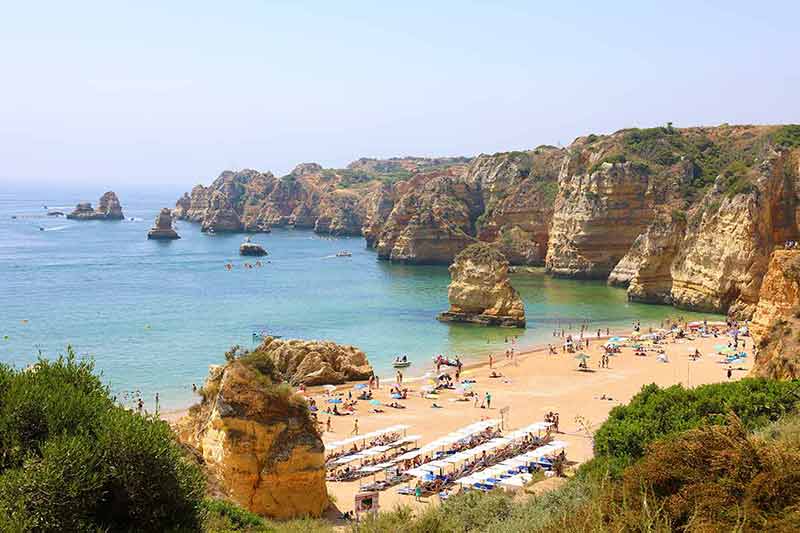
Wherever you go on the Algarve, you will find a blue-flagged beach.
This coastline of 120 miles (192 km) has more than 300 days of sunshine each year, so choose your base, book your return flight to and from Faro and pack your beachwear.
2- Go Cruising
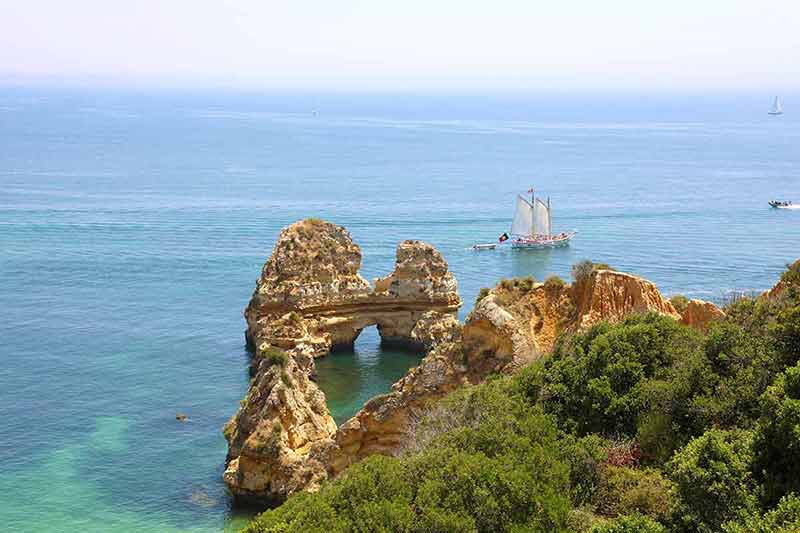
Summer is a fantastic season to head out to sea, as you will cool down a little yet still get a suntan in the light breezes.
There are yacht charters as well as luxury cruises off the Algarve coastline.
Choose a day trip or perhaps something a little longer?
3- Cruise The Douro Valley
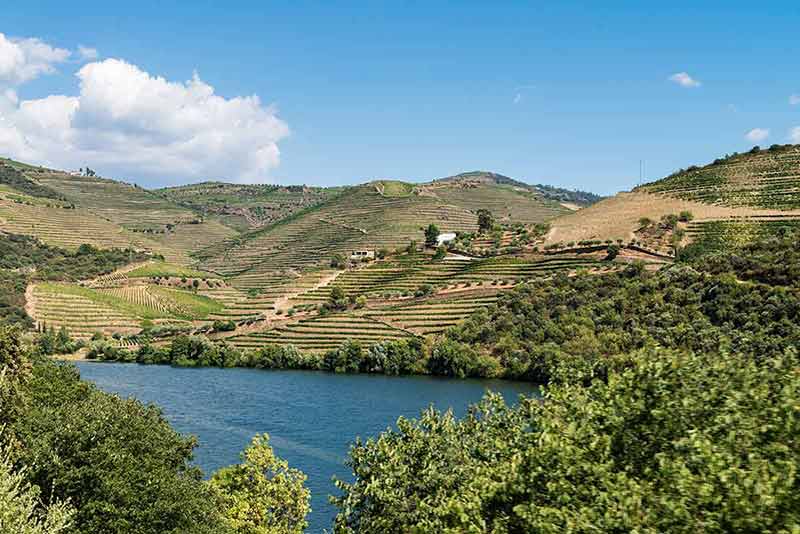
The Douro Valley offers the chance to cruise on the river and visit the vineyards making port and wine.
On a warm summer’s day, you will feel cooler on the river and sampling Portugal’s most famous product is a must-do on a Portuguese holiday.
4- Rock At The Super Bock
If you are a music lover, the Super Bock Super Rock Festival in Meco, south of Lisbon, takes place in July each year.
It started nearly three decades ago, with acts now coming from all over the world.
Music ranges from hip hop to electronic, and the best Portuguese talent is sure to be there.
5- Attend The Popular Saints Festival

Popular Saints Festival (Santos Populares) in June is important to Catholics, and its roots are in religion.
Lisbon and Porto both hold impressive festivities. The Saints remembered at the festival are John, Peter and Anthony.
You can expect food, music, fireworks and parades, a great time to learn more about local culture.
Top tips:
- Dress is casual in Portugal, with cotton the best for the warm weather, so pack accordingly.
- Carry water and protection from the sun while also wearing a hat.
- The waves in some places are huge, and the currents strong, so keep an eye on children.
Portugal in Autumn
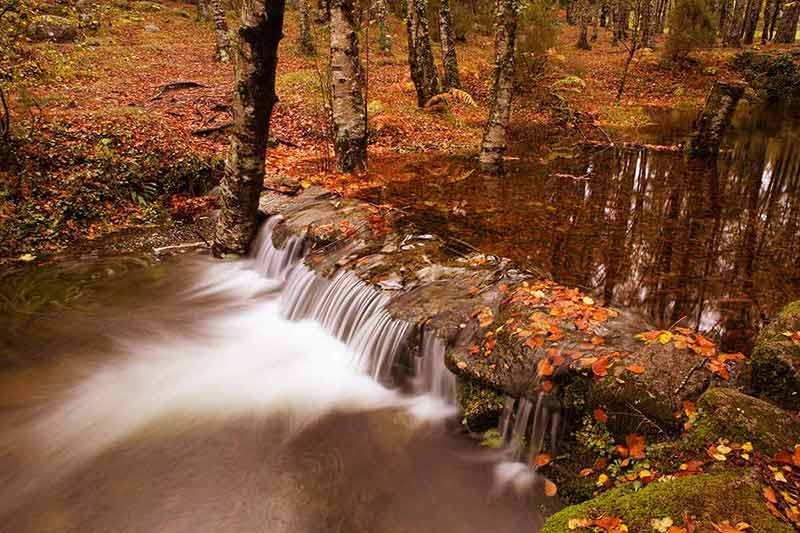
While temperatures slowly fall as autumn progresses, there are still plenty of days of sunshine in November.
At night it will be cool but not cold. You won’t be dining outside, and you will need a coat, but it is still pleasant.
Family holidays finish by September, so crowds diminish at the major city landmarks and on the beaches.
Golfers will find tee times at the top course more readily available, and if you want to explore cities like Lisbon or Porto, you will find little in the way of queues.
This is harvest time in Portugal, with some significant produce reaching the markets. The grape harvest is the most important, but olives, almonds and walnuts, and typical Mediterranean fruits also provide colour to the stalls.
Strangely, Portugal also has plenty of autumn flowers when most countries get that colour in spring. Roses and orange tree blossoms are among the most impressive.
Here are some guideline stats but remember there are regional variations:
- September (Sunrise 0715, Sunset 1945, Average Low Temperature 17C (63F), Average High Temperature Average High 26C (79F))
- October (Sunrise 0745, Sunset 1900, Average Low Temperature 15C (59F), Average High Temperature 23C (73F)
- November (Sunrise 0720, Sunset 1725, Average Low Temperature 12C (54F), Average High Temperature 18C (64F)
Five Things to do in Portugal in Autumn
1- Go Wine Tasting
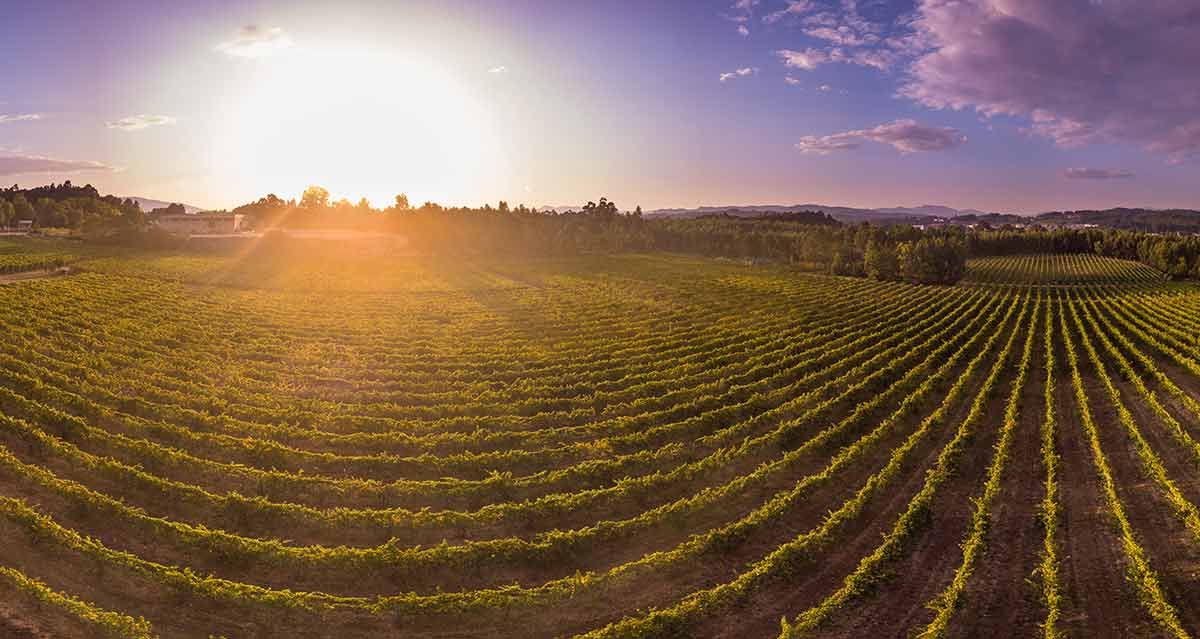
The grape harvest and wine tasting is something you will surely enjoy.
The Douro Valley heading inland from Porto is probably the best place.
Port is unique to Portugal, so you will learn how it differs from wine.
One labour-intensive element that remains is grapes are crushed under foot. This is because feet will not crush the pips in the grapes, reducing their sweetness.
2- Play Golf

Golfing tours to Portugal are becoming more and more popular.
The Algarve is the main region, yet just north of Lisbon, the courses of Estoril and Penna Longa are available for those staying in one of the capital’s main resorts, Cascais.
3 – Go Whitewater Rafting On The Paiva River
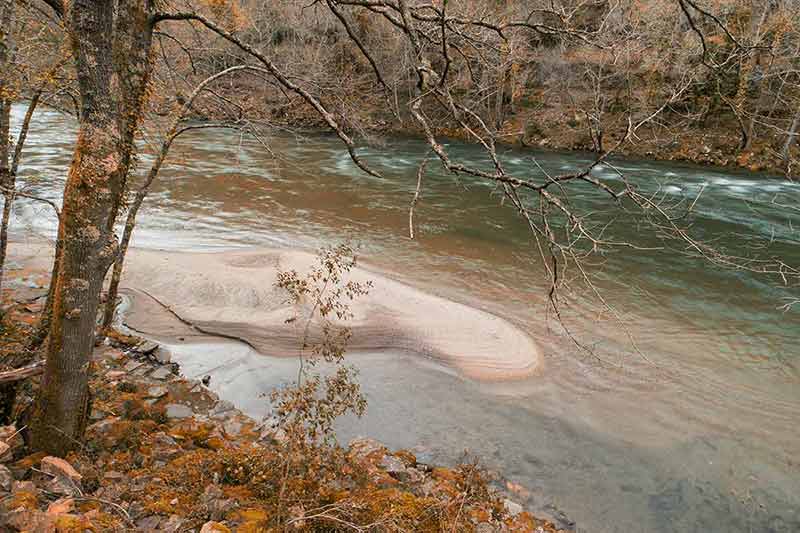
Paiva River near Porto regains its power late in autumn, so canoeing and white-water rafting start once more.
The Paiva is a tributary of the Douro, and the different altitudes through narrow gorges make it ideal for water activities when the flow is good.
4- Spend Time On An Algarve Beach
Temperatures remain good, especially by day in September and October.
Pick your Algarve resort, get your Faro flights and enjoy time on the beach once the large crowds dwindle.
5- Explore Lisbon

Lisbon has many important landmarks and plenty of things to do on a rainy day too.
Prices start to fall, flights, accommodation and car hire.
Minimal queues and a slower pace of life in autumn could give you time to learn more about Portuguese culture and meet the locals.
Top tips:
- Comfortable footwear is important if you are going to explore the city or countryside
- Remember the number 112. It is the police/emergency number.
- Road signs are not great and if you hire a car, use GPS if you are using back roads.
Portugal in Winter

If you are looking for winter sun, Portugal, especially the Algarve, is where you will find it.
There are still more than nine hours of daylight, even in mid-winter and you can expect some rain but rarely does it fall for hour after hour.
While you may not want to stretch out on the beach, there is still plenty to enjoy along the Algarve coastline.
Flights to Faro are less frequent, but you can look at availability.
Portugal is a religious country, so Christmas is quite important, and it is a time when prices will go up for a couple of weeks.
Nativity scenes sometimes line the side of the road, and in towns throughout Portugal, you can see human characters dressed as if they were in the Christmas Story.
Meat is not part of the Christmas meal and when visiting the north, expect octopus; elsewhere, it will be bacalhau, dry salted cod, the national dish for special occasions.
Portugal’s wet season is wintertime, but long grey days are not common.
January is the month that receives the highest rainfall, which gradually falls through February into spring.
Here are some guideline stats but remember there are regional variations:
- December (Sunrise 0745, Sunset 1720, Average Low Temperature 9C (48F), Average High Temperature Average High 15C (59F))
- January (Sunrise 0750, Sunset 1740, Average Low Temperature 8C (46F), Average High Temperature 15C (59F)
- February (Sunrise 0725, Sunset 1815, Average Low Temperature 9C (48F), Average High Temperature 16C (61F)
Five Things to do in Portugal in Winter
1- Enjoy Winter Sun
Winter sun on the Algarve is in contrast to many other European countries.
Some places shut down in the middle of winter to give them a break after a busy summer and autumn, but plenty stay open to greet winter tourists. Prices will be good.
2- Celebrate Christmas In Portugal
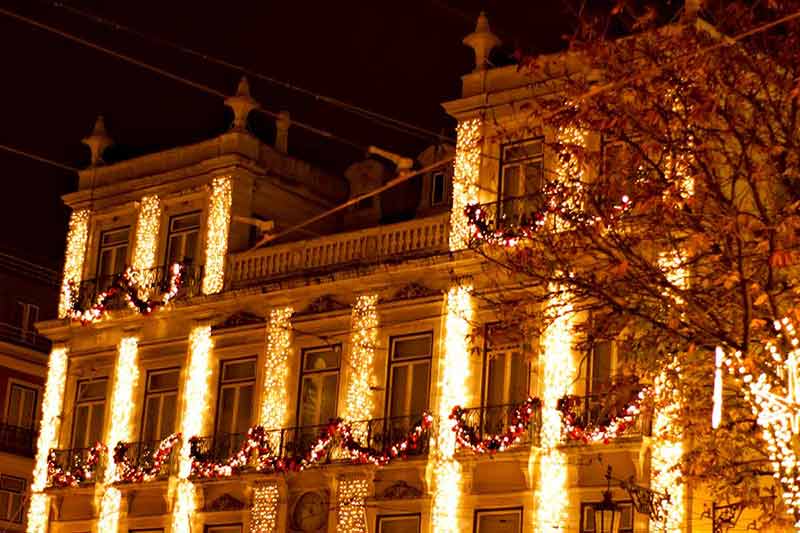
Christmas in Portugal is quite a contrast from Christmases elsewhere.
Don’t expect Turkey because it is a time, like Fridays, for Catholic people to eat fish.
There are nativity scenes everywhere while families put out a pair of shoes on Christmas Eve for Jesus to wear.
3- Admire The Views Over Lisbon
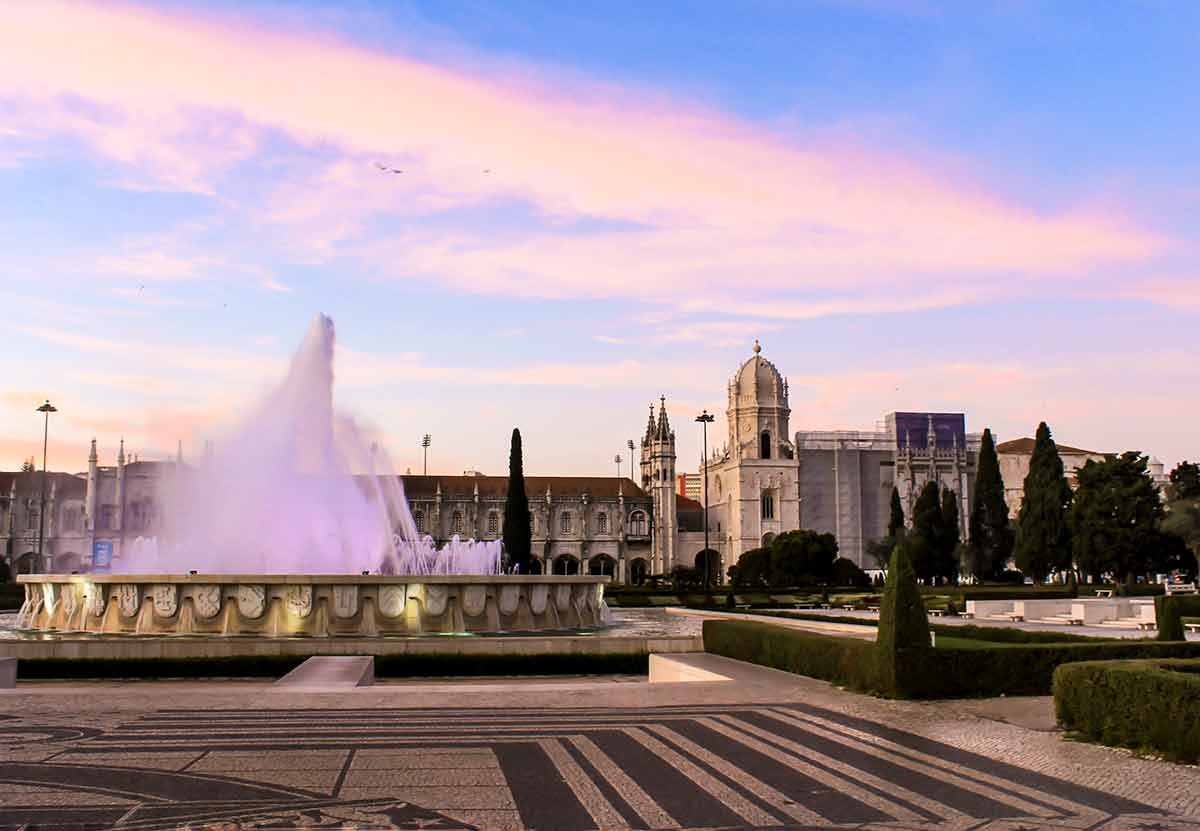
Lisbon has many impressive landmarks. Jeronimos Monastery is the last resting place of the famous explorer Vasco da Game.
Sao Roque Church contains gold brought back from Brazil, while St. George’s Castle stands on high.
The views over Lisbon from there are memorable. If it rains, there are plenty of impressive museums to visit.
4- Taste Portuguese Cuisine

Learn about Portuguese cuisine, and try some dishes for yourself, book cookery classes to hone your skills.
Classes are available in cities like Lisbon and Porto, but you may find that chefs in Algarve resorts will also have the time during the off-season to teach you.
5- Wander Around Porto
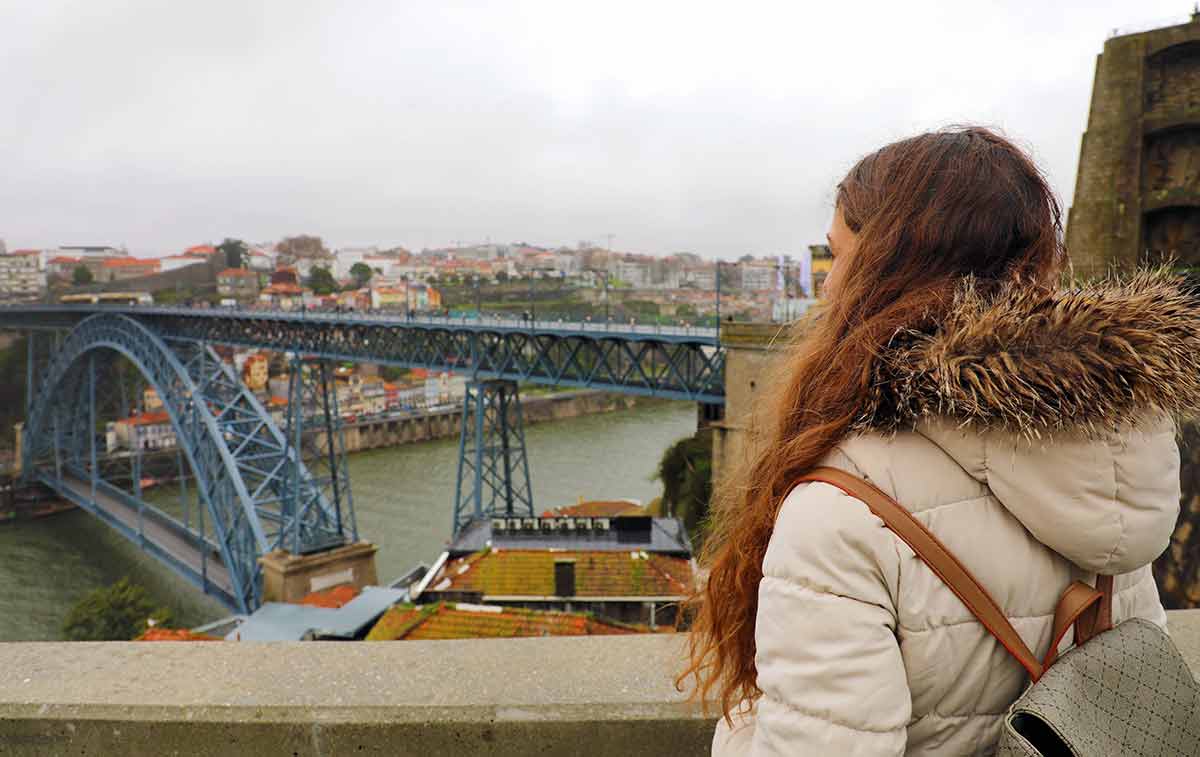
Porto is the coolest city in the winter but still warmer than many European places.
It has beautiful churches, with the cathedral’s foundations laid early in the 12th Century.
The train station is especially impressive, with tile murals helping you forget you are in something as mundane as a station.
Winter is a great time just to wander around and take in this lovely city.
Top tips:
- This is low season, so prices should reflect that, so look for special deals
- Be ready for rain and temperatures falling as the sun sets
- Be prepared with indoor activities if the forecast is poor
Portugal in Spring
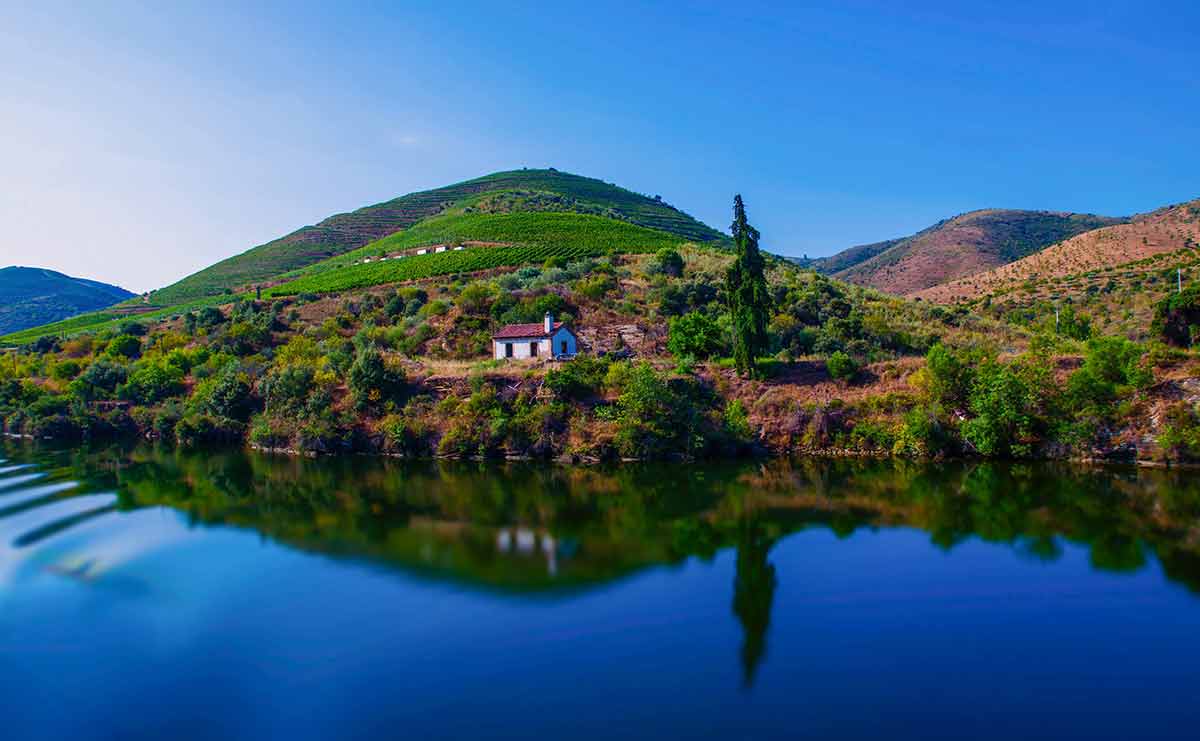
Spring can come early in Portugal, especially the further south you go. Flowers and blossoms bring a splash of colour as everything seems to come alive.
Easter marks the beginning of the season, and that can be anywhere between the second half of March to mid-April.
Portugal is a deeply religious catholic country, so Easter is a very important time in the country. Celebrations begin on Palm Sunday, the week before Easter.
Most people visit church more than once and abstain from eating meat. Rituals and parades happen daily in even the smallest villages.
Easter Sunday is when habits change; lamb is the typical meal for a family Easter lunch.
The number of flights into Portugal’s airports increases in spring, especially Faro, the gateway to the Algarve.
If you combine Easter with the Algarve, you will get both religion and beaches but prices will rise from those charged just a short time before.
Here are some guideline stats but remember there are regional variations:
- March (Sunrise 0645, Sunset 1845, Average Low Temperature 10C (50F), Average High Temperature Average High 18C (64F))
- April (Sunrise 0700, Sunset 2015, Average Low Temperature 12C (54F), Average High Temperature 20C (68F)
- May (Sunrise 0620, Sunset 2040, Average Low Temperature 14C (58F), Average High Temperature 22C (72F)
Five Things to do in Portugal in Spring
1- Attend The Iberian Mask Festival
The Iberian Mask Festival takes place annually in Lisbon over four days in May.
You will see Spanish as well as Portuguese handicrafts. And there are parades, music workshops and stalls.
It is a reminder of the links between the two countries despite different languages.
2- Watch A Soccer Match

Portugal is a soccer-mad country, where three clubs tend to dominate, Benfica and Sporting in Lisbon and FC Porto in Porto.
If you want to go to a game, as the season ends, you should have no problem getting a ticket.
3- Go Walking
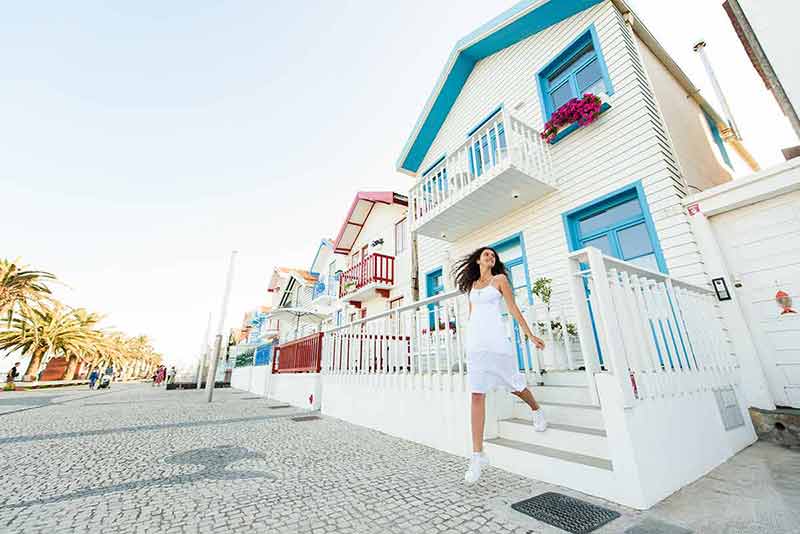
Spring is the ideal time to go walking in Portugal, and there are plenty of well-trodden trails between Lisbon and Porto.
If you have time and a decent fitness level, you can walk between the two cities, a distance of almost 200 miles (320 km).
4- Play Golf
Golf in Portugal starts to appeal to overseas visitors in the spring, especially those who live in countries where rain and snow severely restrict their ability to play.
There are several places with multiple courses within easy reach in the Algarve.
When demand increases, green fees in springtime may be lower than in the following weeks.
5- Go Fishing
While the high season for fishing is summer through to winter, there are plenty of impressive species that you can catch in spring.
Tuna, blue and white marlin, salmon, sea bass and swordfish may take your bait.
Portugal has plenty of lakes with trout, a prized catch.
Top tips:
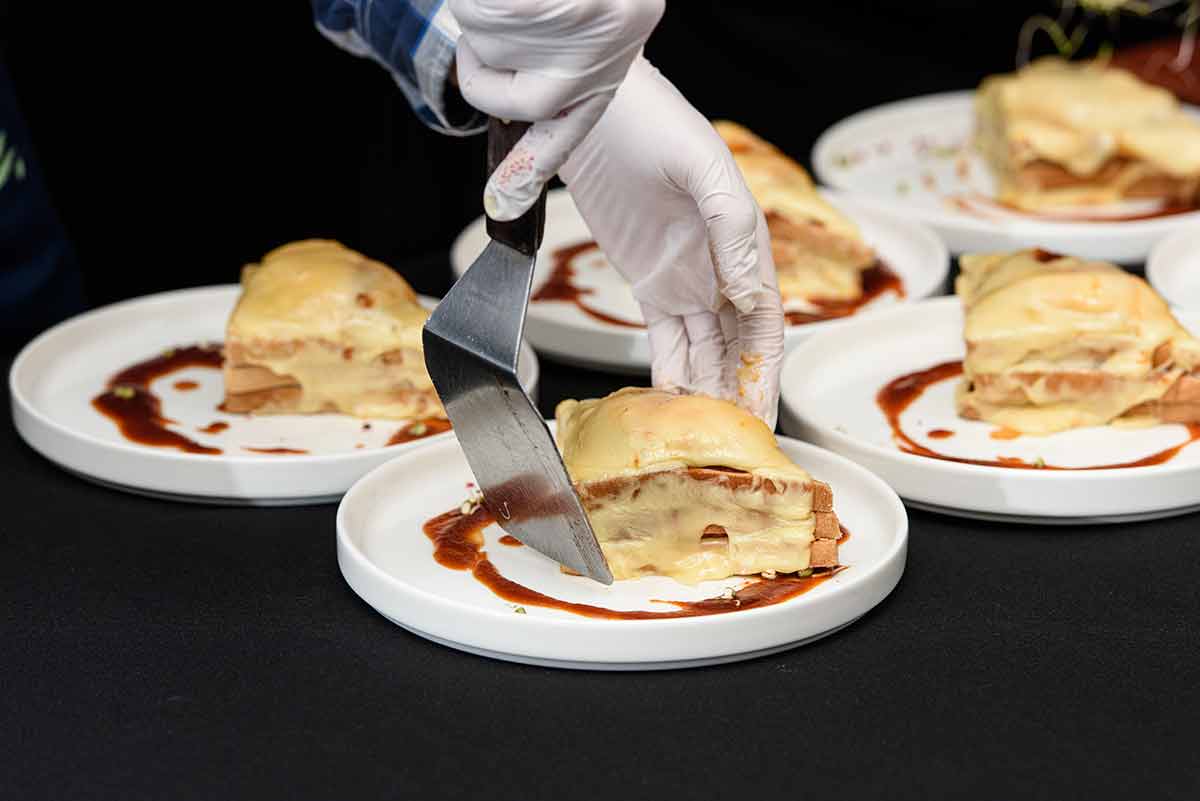
- Always pay before using public transport to avoid a big fine.
- Check prices to avoid paying tourist rates.
- Fresh sardines on the Algarve are stunning. Try them.
Are you itching to travel somewhere but can’t decide where or when to go? These posts might help:
- Best Time To Visit Iceland
- Best Time To Visit Macau
- Best Time To Visit Singapore
- Best Time To Visit China
- Best Time To Visit Egypt
- Best Time To Visit Japan
- Best Time To Visit Cuba
- Best Time To Visit England
- Best Time To Visit Peru
- Best Time To Visit Spain
- Best Time To Visit California
- Best Time To Visit Colorado
- Best Time To Visit Turkey
- Best Time To Visit Greece
- Best Time To Visit France
- Best Time To Visit Switzerland
- Best Time To Visit Norway
- Best Time To Visit Italy
- Best Time To Visit Germany
- Best Time To Visit Thailand
- Best Time To Visit Portugal
- Best Time To Visit Croatia
- Best Time To Visit Scotland
- Best Time To Visit Costa Rica
- Best Time To Visit Argentina
- Best Time To Visit Brazil
- Best Time To Visit Chile
- Best Time To Visit Austria
- Best Time To Visit India
Plan Your Trip
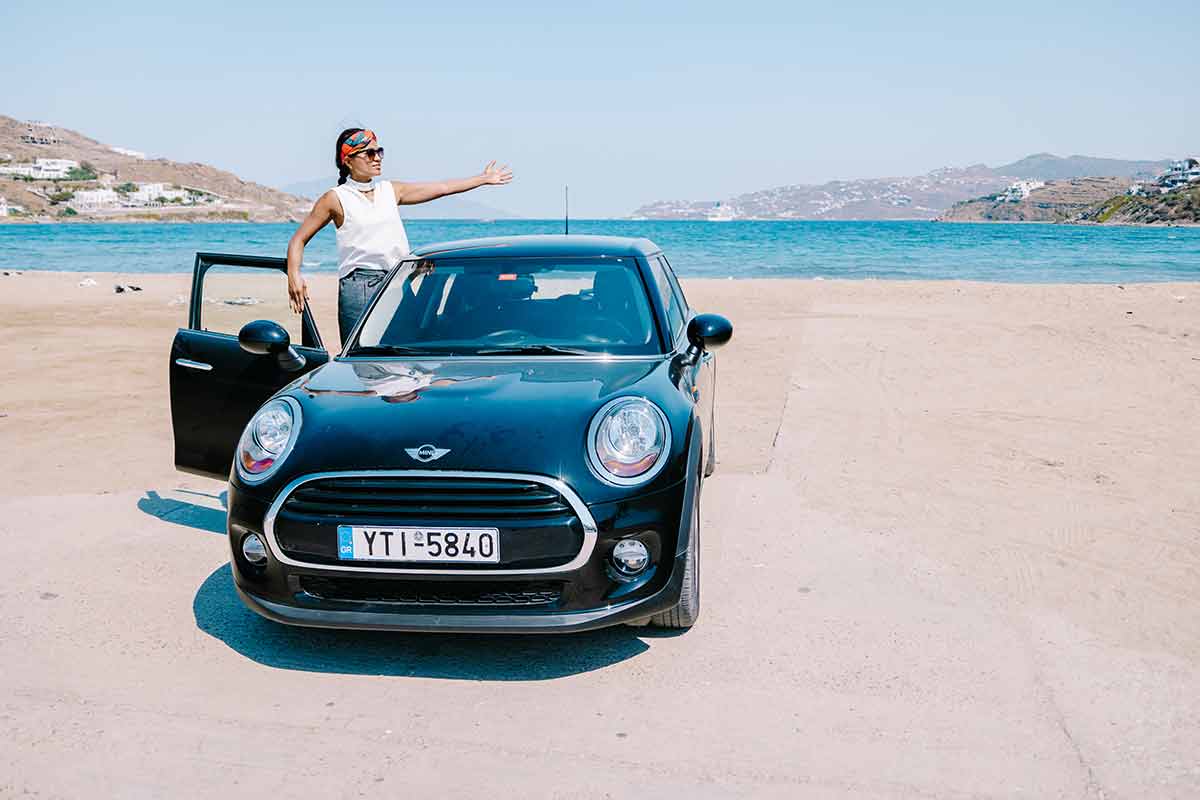
Rent A Car – Find the best car rental rates at Discover Cars. They compare car hire companies to provide you with the best deal right now.

Find A Hotel – If you’re curious about this article and are looking for somewhere to stay, take a look at these amazing hotels.

